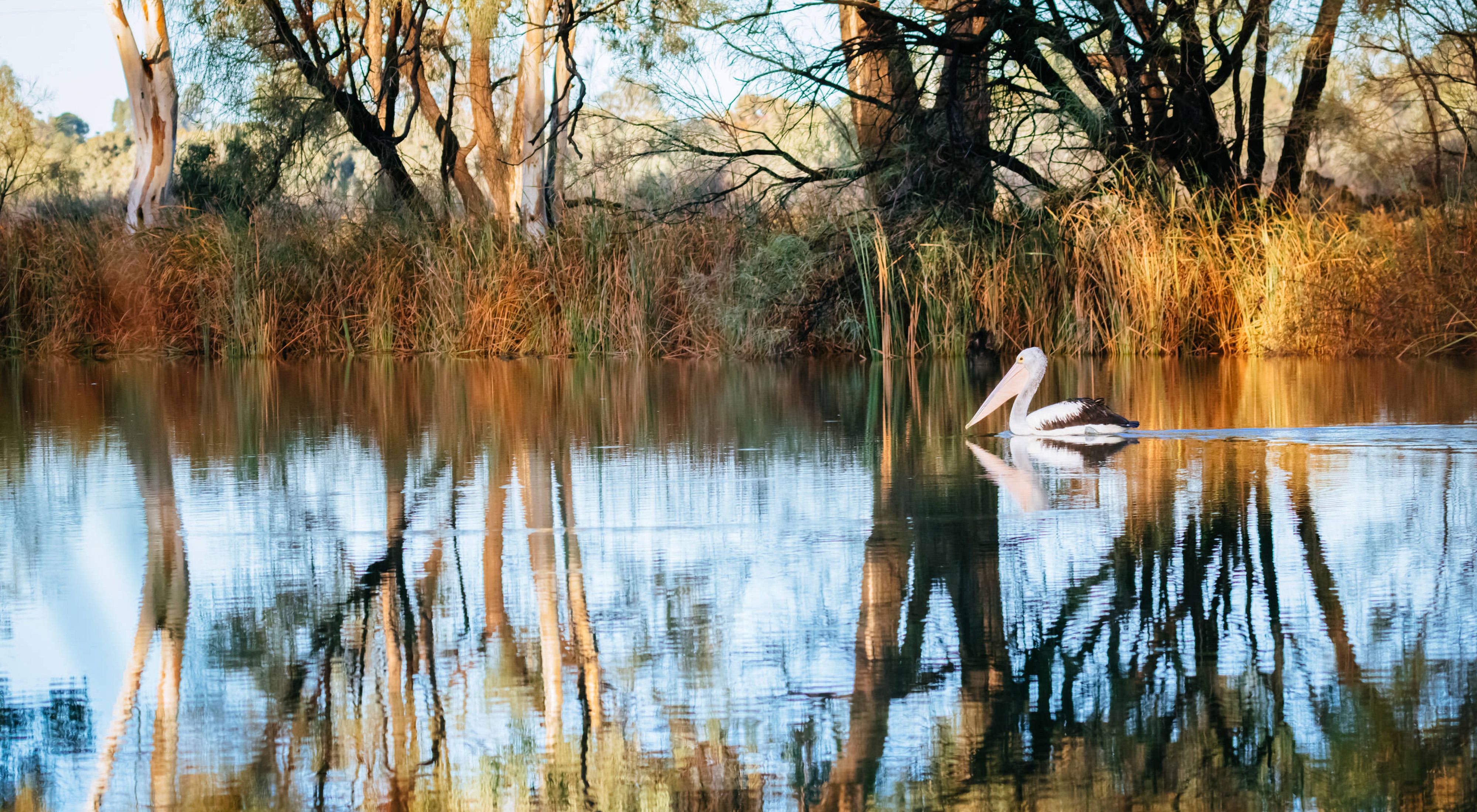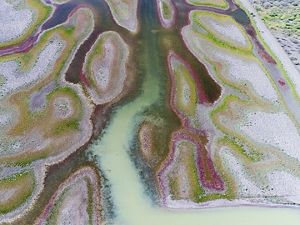Creating a sustainable Murray-Darling
We’re balancing agriculture, finance and the environment.
The Murray-Darling Basin is one of the world’s largest and most productive river basins, supporting a $24 billion agricultural industry and providing one third of Australia’s food supply. It harbours some of our most important natural assets by supporting a diverse range of animals, plants and ecosystems of national and international significance. This includes 35 endangered birds and 16 endangered mammals.
However, the Murray-Darling is also one of the most vulnerable river basins on Earth. Decades of engineering, over-allocation and the drying effect of climate change have significantly reduced runoff to rivers, creeks and wetlands within the basin. In a 2012 assessment of overall ecosystem health, more than 80% of the Murray-Darling Basin’s river valleys were rated as being in poor or very poor health based on assessments of fish, invertebrates and vegetation. The Basin’s ecosystems are suffering and as a result, many species that depend on the region’s natural flooding cycle face extinction.

To address these environmental concerns, in 2015 we established the Murray-Darling Basin Balanced Water Fund to provide water security for farmers, while protecting culturally significant wetlands that support threatened species and ecosystems. The Fund invests in permanent water rights in the Southern Murray-Darling Basin and allocates those rights in a smart way. When water is abundant and agricultural demand is lower, more water is made available to local wetlands. When water is scarce and agricultural demand is higher, more water is made available to irrigation. This approach optimises agricultural and environmental outcomes by replicating the natural wetting and drying cycles of the Basin. It’s a win-win approach, aligning the interests of people and nature.
The Fund is a partnership between The Nature Conservancy, the Murray Darling Wetlands Working Group and Kilter Rural, with support from the National Australia Bank.
The Fund provides the following conservation outcomes:
- Improved waterbird and native fish habitats including breeding habitats
- Improved health for wetlands, floodplain forests and woodlands
- Sustainability of plant and fish refuges
- Increased wetland plant health and growth
In addition to environmental outcomes, the restoration of environmental flows helps conserve sites of important Aboriginal cultural and spiritual value.

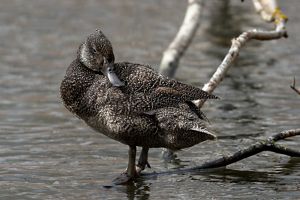
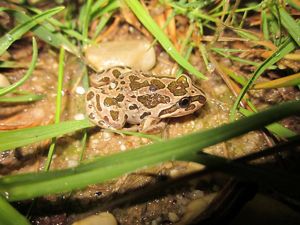
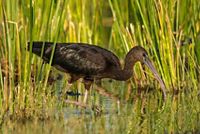
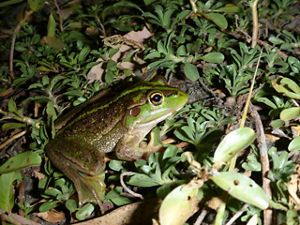
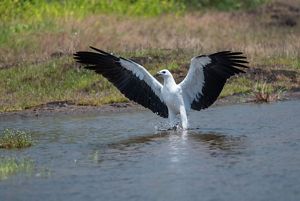
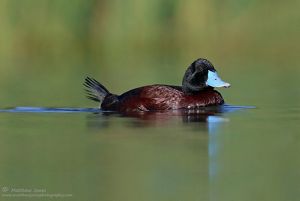
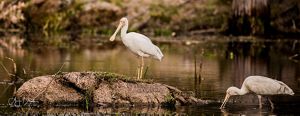
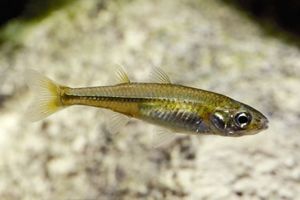
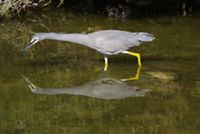

Sharp-tailed Sandpipers: are migratory shorebirds. They breed in Siberia and then migrate to Australia, arriving in September and departing in February-March. © JJ Harrison, Wikimedia Commons

Freckled Duck: also referred to as the monkey duck or oatmeal duck. During the breeding season, males’ bill bases turn crimson. © Ed Dunensm Wikimedia Commons

Spotted Marsh Frog: lives in the eastern half of Australia. They can be found in swamps, lagoons and creeks in wet coastal areas and dry inland areas. © Matt Clancy Wildlife Photography, Wikimedia Commons

Glossy Ibis: searching in the shallows for tasty invertebrates © Mark Lethlean

Southern Bell Frog: is one of the largest frog species in Australia. © Rich Gilmore / TNC

White-bellied Sea-Eagle: is the second largest bird of prey found in Australia. © Madayipara, Wikimedia Commons

Blue-billed Duck: in the Murray-Darling Rivers. © Matthew Jones

Yellow-billed Spoonbills: common in southeast Australia. The bill of the yellow-billed spoonbill works like forceps to catch prey © Andrew Black

Murray Hardyhead : Locally extinct in NSW is reintroduced to wetlands © G Schmida

White-faced Heron: stalking its prey © Gary Tate
Creating a better way to share water
Farming and looking after nature go hand in hand for Wagyu beef cattle farmer Jamie McMaster. When Jamie first moved to Yambuna, near Echuca in northern Victoria, he said the 11 hectares of wetlands that border his farm had not seen water in years.
“We bought the property in 2015 and it was dry for at least six or seven years prior to that”. Forty megalitres of water pumped into nationally-significant Yambuna Lagoon in September 2017, thanks to the Murray-Darling Basin Balanced Water Fund, provided a timely top up to the natural flooding that occurred 12 months prior.
"We were delighted with the huge improvements that came with the lagoon. We saw a real increase in biodiversity in the area. We got lots more birds and even had freshwater turtles nesting within days of the lagoon's banks coming under water."
Quote: Jamie McMaster
We were delighted with the huge improvements that came with the flooding of the lagoon. We saw a real increase in biodiversity in the area.

Impact of the Murray-Darling Basin Balanced Water Fund
- We have supported the return of 7,109 megalitres of water to wetlands across 24 wetlands in the southern Murray-Darling Basin, covering 630 hectares (to 30/6/2021).
- We have partnered with four First Nations communities for water delivery, cultural planning and threatened species management.
- 125 native wetland plant species have been identified across the wetlands to date, with increased growth noted.
- Watering events are providing critical habitat for water birds, with monitoring showing an increase in bird diversity of up to 212% and an increase in bird abundance of 282% following the inundation of wetland areas.
- Two nationally threatened species have been recorded in response to watering events, the Southern Bell Frog and Eastern Regent Parrot.
- Aerial surveys have recorded the nationally Endangered Australasian Bittern, with at least 20 males recorded calling
- An adult female Straw-necked Ibis (named Gayini) has been tracked travelling through NSW and Queensland all the way up to the Gulf of Carpentaria.
- Watering has supported the return of the locally extinct Murray Hardyhead Craterocephalus fluviatilis, a freshwater fish species, to Murray River waters in New South Wales.
The benefit of watering wetlands extends far beyond the area of wetland directly inundated through improving the condition of terrestrial vegetation, providing important corridors of habitat for species like migratory waterbirds. It influences and improves biodiversity across the broader landscape. Evidence suggests that environmental water may also be supporting important habitat for terrestrial fauna including reptiles, woodland birds and mammals.
We estimate nearly 4600 ha of connected floodplain landscapes have benefitted from the environmental watering supported by the Fund.
You can help us
Together we can conserve the Murray-Darling and other iconic Australian landscapes so people and nature can thrive.
